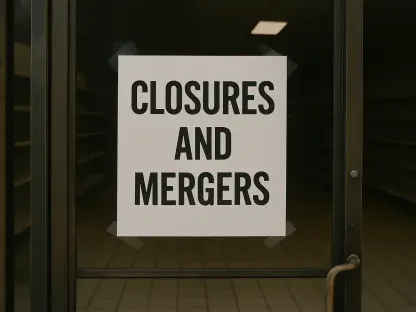In recent years, Massive Open Online Courses (MOOCs) have revolutionized the education sector, offering unprecedented access to learning for millions of people worldwide. The market for MOOCs is on the brink of explosive growth, projected to expand from $43.8 billion in 2023 to a staggering $411.6 billion by 2030. This phenomenon reflects a compound annual growth rate (CAGR) of 37.7%, underscoring the transformative power of technology in education.
The Rise of MOOCs
Changing Landscape of Education
The advent of MOOCs has fundamentally altered the traditional education paradigm. With the proliferation of high-speed internet and mobile technology, learning is no longer confined to the physical classroom. Such platforms offer an inclusive space that transcends geographical boundaries, making quality education accessible to a broader audience like never before. Massive online platforms like Coursera, Edx, and Udacity have leveraged technological advancements to democratize education. These platforms provide a vast array of courses from top-tier universities and institutions, giving learners the flexibility to acquire new skills and knowledge at their own pace and on their schedule.
Beyond mere accessibility, MOOCs also foster a culture of continuous learning by providing specialized, niche courses that may not be available in traditional educational settings. This democratization of education enables lifelong learning, empowering individuals to upskill and reskill in an ever-evolving job market. The social and interactive components of MOOCs, such as discussion forums and peer assessments, replicate some of the communal aspects of traditional classrooms, offering a holistic online learning experience.
Cost Efficiency and Accessibility
One of the most compelling aspects of MOOCs is their remarkable cost-effectiveness and accessibility compared to traditional forms of education. Traditional education models can be prohibitively expensive, thereby placing quality education out of reach for many individuals around the world. In contrast, MOOCs offer an economical alternative by often providing free access to course materials and charging only nominal fees for certifications. This lower cost barrier has attracted a diverse demographic of learners, from students seeking supplementary education to professionals aiming to upskill or reskill in their respective fields.
The affordability of MOOCs, coupled with the flexibility of online learning, makes them an attractive option for lifelong learning and continuous professional development. Furthermore, the asynchronous nature of MOOCs allows learners to engage with course materials at times that are convenient for them, making it easier for those with work and family commitments to continue their education. This flexibility, along with the high quality of educational content available through MOOCs, ensures that learners are able to pursue their academic and professional goals without the financial burdens that often accompany traditional education models.
Key Drivers of Market Growth
Technological Innovations
The rapid integration of advanced technologies has been a significant driver of growth in the MOOCs market. Innovations in artificial intelligence (AI), machine learning, and data analytics enable MOOCs to deliver personalized learning experiences tailored to individual learning styles and preferences. These technologies enable adaptive learning paths, where the content is dynamically adjusted based on the learner’s progress and performance, thereby enhancing the efficacy of online education. Gamification elements are also increasingly being incorporated into MOOCs, making the learning experience more engaging by introducing elements like quizzes, badges, and leaderboards.
Moreover, the incorporation of virtual reality (VR) and augmented reality (AR) technologies is transforming MOOCs by creating immersive learning environments. These technologies simulate real-world scenarios, offering hands-on experience that traditional learning methods may lack. For instance, medical students can practice surgeries in virtual environments, while engineering students can work on virtual prototypes, thereby bridging the gap between theoretical knowledge and practical application. Such technological advancements not only enhance the learning experience but also expand the scope of MOOCs to include more practical and applied disciplines.
Impact of COVID-19
The COVID-19 pandemic has acted as a catalyst for the rapid growth of the MOOCs market, compelling educational institutions worldwide to pivot to online learning solutions. This sudden shift significantly accelerated the adoption of MOOCs by both learners and educators, fostering a more profound appreciation and dependency on digital education. The pandemic underscored the necessity for flexible and accessible learning platforms that could reach students regardless of their geographical location or socio-economic status. As physical classrooms closed, the demand for online courses surged, providing an impetus for MOOCs to expand their offerings and capabilities rapidly.
This shift towards digital learning is not seen as a temporary response but rather as a long-term transformation of the educational landscape. Even as physical classrooms reopen, the hybrid model—combining online and offline education—is likely to persist. The pandemic has fundamentally altered educators’ and learners’ perceptions of online learning, positioning MOOCs as integral components of modern education. This sustained integration of digital learning solutions further entrenches MOOCs within the educational ecosystem, setting the stage for continued growth and innovation in the sector.
Regional Market Insights
United States and China
The United States and China are the frontrunners in the MOOCs market, leading the charge in both market size and technological innovation. The United States is estimated to capture $12.9 billion in revenue by 2023, driven by its robust digital infrastructure and high levels of internet penetration. In the U.S., government initiatives aimed at promoting digital education and public-private partnerships between educational institutions and technology companies further contribute to the expansive growth of the MOOCs market. Companies like Coursera and Edx, headquartered in the U.S., not only contribute to local market growth but also exert significant influence on the global stage.
China’s MOOCs market is anticipated to grow at a staggering 36.2% CAGR, reaching approximately $59.8 billion by 2030. The rapid growth in China can be attributed to the country’s large population, increasing mobile internet usage, and a strong governmental push towards digital literacy and online education. China’s national policies often endorse online learning, paving the way for widespread adoption of MOOCs in both urban and rural areas. Chinese platforms like XuetangX offer localized content, making MOOCs more accessible and relevant to Chinese learners, thereby driving market growth.
Asia-Pacific and Europe
Beyond the United States and China, other regions such as the Asia-Pacific and Europe are also witnessing substantial growth in the MOOCs market. Countries like Japan, Canada, and Germany have become significant contributors, driven by rising internet penetration rates and a growing emphasis on skill development. In Europe, there is a notable trend towards integrating MOOCs into conventional education systems, where online courses complement traditional curricula. This hybrid approach is supported by various European government initiatives aimed at enhancing digital literacy and making education more inclusive and accessible.
The Asia-Pacific region shows immense potential due to its large, young population and increasing smartphone usage. Countries like India and Indonesia are witnessing a surge in MOOC enrollments as mobile technologies become more ubiquitous. Efforts to improve digital literacy and promote online education in these regions are further expected to boost market growth. Localized content that addresses the specific needs and challenges of learners in these regions also contributes to the increasing adoption of MOOCs, making the Asia-Pacific a critical area for future market expansion.
Competitive Landscape
Leading Market Players
The MOOCs market is highly competitive, featuring significant players like Coursera, Edx, and Blackboard, Inc., who are continuously evolving their offerings to maintain a competitive edge. Coursera and Edx have formed partnerships with prestigious universities to offer accredited courses and even degree programs, thereby enhancing the credibility and appeal of their platforms. Coursera’s collaboration with universities like Stanford and the University of Michigan, and Edx’s partnerships with institutions such as Harvard and MIT, enable them to offer high-quality educational content that attracts a global learner base. This not only broadens their reach but also strengthens their brand equity in the competitive MOOCs market.
Blackboard, Inc. focuses on integrating educational technologies that facilitate effective online learning experiences. The company offers a range of tools and services to educational institutions, enabling them to seamlessly transition to online education. By providing Learning Management Systems (LMS) and other technological solutions, Blackboard empowers schools, colleges, and corporations to deliver comprehensive MOOC experiences. This focus on technological integration ensures that educational institutions can offer a seamless and effective online learning experience, further contributing to the market’s growth and dynamism.
Strategic Alliances and Innovations
Strategic partnerships and collaborations play a pivotal role in the competitive landscape of the MOOCs market. Companies are joining forces with educational institutions, governments, and corporates to expand their reach and enhance their educational offerings. For example, Coursera has partnered with the World Bank to develop courses aimed at capacity-building in developing countries. Such strategic alliances enable MOOCs platforms to tap into new markets and demographics, driving growth and diversification. Collaborations with government bodies also lead to policy support and infrastructure development, which are crucial for market expansion.
Innovations in course design further keep the market dynamic and forward-looking. Incorporating micro-credentials and stackable certificates into MOOCs provides learners with more flexible and targeted learning paths. These credentials allow learners to break down their educational journey into smaller, manageable segments, each of which can be completed and certified individually. This modular approach is particularly appealing to working professionals who may not have the time or resources to commit to long-term courses. Such innovations not only cater to the evolving needs of learners but also ensure that MOOCs remain a relevant and attractive option for a wide range of educational and professional development goals.
The Future of MOOCs
Lifelong Learning and Skill Development
In recent years, Massive Open Online Courses (MOOCs) have completely transformed the education landscape, providing unparalleled access to learning for millions around the globe. This democratization of education means that anyone with an internet connection can gain access to courses from top universities, significantly leveling the playing field.
The growth of the MOOC market is nothing short of extraordinary, with projections showing an increase from $43.8 billion in 2023 to a whopping $411.6 billion by 2030. This represents a compound annual growth rate (CAGR) of 37.7%, a statistic that highlights the immense impact technology is having on education.
Several factors contribute to this rapid expansion. Firstly, the flexibility and affordability of MOOCs make them an attractive alternative to traditional education, especially for those who may not have the means or time to attend in-person classes. Secondly, the quality of online education has improved significantly, with many platforms offering interactive and engaging content that rivals physical classrooms.
Furthermore, the pandemic has accelerated the adoption of online learning, pushing educational institutions to bolster their digital infrastructure. Companies are also increasingly recognizing the value of continual learning, often supporting employees in taking online courses to upskill and stay current with industry trends.
In summary, MOOCs are not just a passing trend but a fundamental shift in how education is delivered and consumed. As the sector continues to grow exponentially, it promises to make learning more accessible, flexible, and inclusive for everyone, thereby reshaping the future of education.









